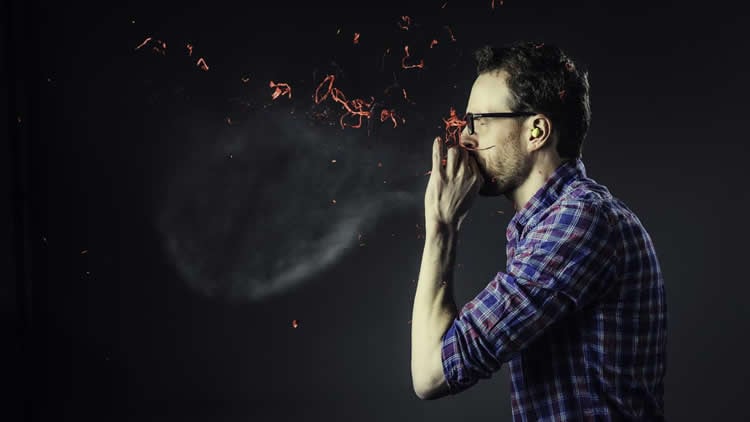Summary: A new study reports popping balloons can be louder than a high power shot gun going off next to someone’s head and the noise could lead to permanent hearing loss.
Source: University of Alberta.
Popping balloons can be louder than shotgun blasts — and can lead to permanent hearing loss, University of Alberta researchers say.
A common birthday party favour can blow up into a problem for children–but also a bigger conversation about hearing loss, say University of Alberta researchers.
U of A hearing experts Bill Hodgetts and Dylan Scott measured the noise generated by bursting balloons and were startled to find that the impact, at its highest level, was comparable to a high-powered shotgun going off next to someone’s ear. They aren’t out to be party-poopers, but they want to use their findings about bombastic balloon noise, published in Canadian Audiologist, to raise awareness about general risks to hearing.
“This research is a conversation starter,” said Hodgetts, an associate professor of audiology. “We are not saying don’t play with balloons and don’t have fun, just try to guard against popping them. Hearing loss is insidious–every loud noise that occurs has a potential lifelong impact. We want people to be mindful of hearing damage over a lifetime, because once you get to the back end of life, no hearing aid is as good as the once healthy built-in system in your inner ear.”
The shock to tiny eardrums may not seem worrisome; after all, how often is the average child exposed to a constant barrage of popping balloons? But it does raise the question of safety thresholds for impulse noise–created by a sudden burst of intense energy–that can result in gradual hearing loss.
Both fathers of young children, Hodgetts and Scott wanted to explore the balloon noise that often goes hand-in-hand with birthday parties, where the urge to pop the floating toy is irresistible. Hodgetts got the idea after seeing a YouTube video where kids at a party stomped hundreds of balloons.
“I thought the acoustic insult on those kids’ ears must be something to be concerned about, so we asked the question, how loud are these things?”
Pretty loud, as it turns out.
Louder than a 12-gauge shotgun
Wearing ear protection and using a high-pressure microphone and a preamplifier, Hodgetts and Scott measured the noise effects by busting balloons three different ways: popping them with a pin, blowing them up until they ruptured and crushing them until they burst.

The loudest bang was made by the ruptured balloon at almost 168 decibels, four decibels louder than a 12-gauge shotgun. The Canadian Centre for Occupational Health and Safety recommends that the maximum impulse level any Canadian should experience should not exceed 140 decibels. Even one exposure could be considered potentially unsafe to hearing for both children and adults.
“It’s amazing how loud the balloons are,” Scott said. “Nobody would let their child shoot something that loud without hearing protection, but balloons don’t cross people’s minds.”
The results for the other two methods were slightly lower, but still a concern, he said.
As real a health concern as sun damage
Hearing damage occurs when the delicate hair cells–which don’t regrow–in the inner ear are worn down by noise.
People need to start viewing cumulative hearing loss the same way they think about an equally passive but very real health concern like sun damage, Hodgetts suggested.
Researcher Dylan Scott pops a balloon to measure its loudness. He’s wearing hearing protection because the loudest balloon ruptures in reached nearly 168 decibels–louder than the blast from a 12-gauge shotgun—which explains why Scott is wearing hearing protection.
“We used to put on suntan oil and go as dark as we could, but you look at parents and schools and daycares and it’s now part of the routine to put sunscreen on a child.”
Adults should also follow suit, Hodgetts added, noting that he often sees parents clapping hearing protection on their children at family events like music or theatre festivals, but not doing the same for themselves.
“We need to think about our hearing health just like we think about our overall health,” he said. “Hearing loss is one of those invisible problem–until you have it, you don’t even think about it. Once you have it, it impacts everything.”
Source: Bev Betkowski – University of Alberta
Image Source: NeuroscienceNews.com image is credited to Bill Hodgetts.
Video Source: Video is credited to UniversityofAlberta.
Original Research: Full open access research for “Did You Know How Loud Balloons Can Be?” by Bill Hodgetts, PhD and Dylan Scott, BSc, MSc in Canadian Audiologist. Published online January 2017 doi:not available
[cbtabs][cbtab title=”MLA”]University of Alberta “Pop! Goes the Hearing.” NeuroscienceNews. NeuroscienceNews, 30 January 2017.
<https://neurosciencenews.com/balloon-hearing-test-6027/>.[/cbtab][cbtab title=”APA”]University of Alberta (2017, January 30). Pop! Goes the Hearing. NeuroscienceNew. Retrieved January 30, 2017 from https://neurosciencenews.com/balloon-hearing-test-6027/[/cbtab][cbtab title=”Chicago”]University of Alberta “Pop! Goes the Hearing.” https://neurosciencenews.com/balloon-hearing-test-6027/ (accessed January 30, 2017).[/cbtab][/cbtabs]
Abstract
Did You Know How Loud Balloons Can Be?
Importance: Noise exposure is a cumulative and insidious preventable condition.
Objective: In this paper, we investigate the level and potential hearing risks associated with balloon explosions.
Design: We measured balloons that were 1) inflated to rupture, 2) crushed to pop, and 3) popped with a pin.
Results: We found that, in the inflated to rupture condition, the average impulse level was more intense than a 12-gauge shot gun and nearly as intense as a 357 magnum.
Conclusions and Relevance: These results and their implications are put into a broader context for the reader and a case is made for changing the way we talk about and consider cumulative noise exposure throughout our lives.
“Did You Know How Loud Balloons Can Be?” by Bill Hodgetts, PhD and Dylan Scott, BSc, MSc in Canadian Audiologist. Published online January 2017 doi:not available






